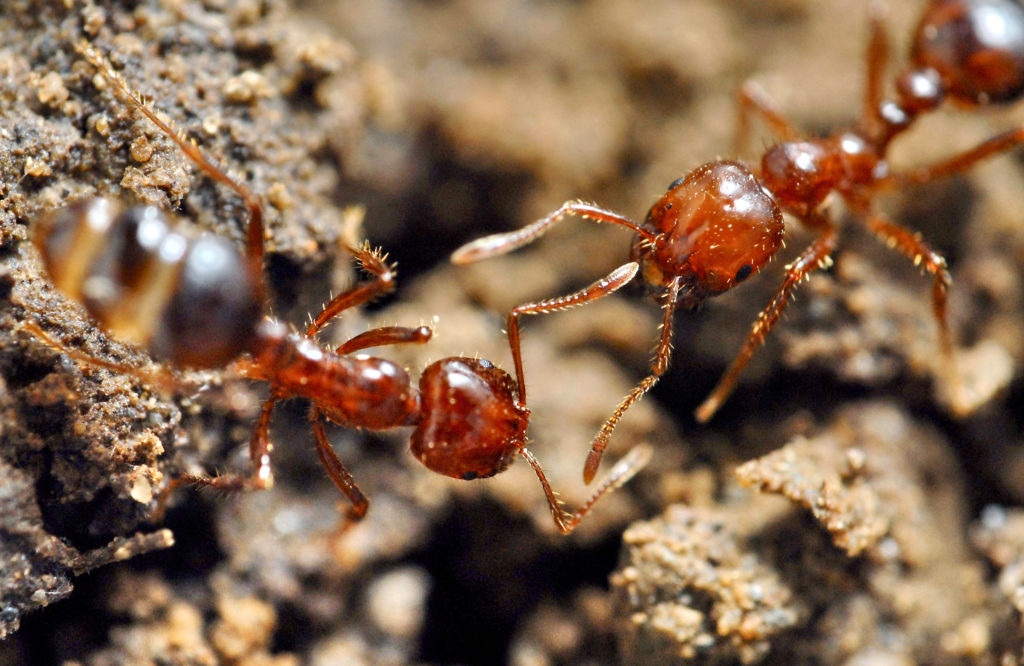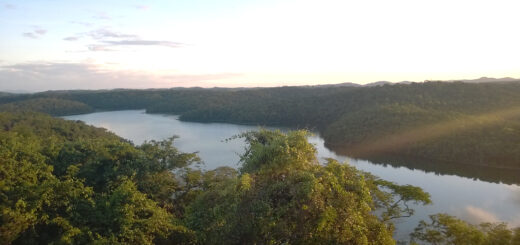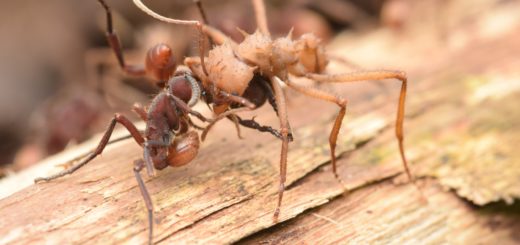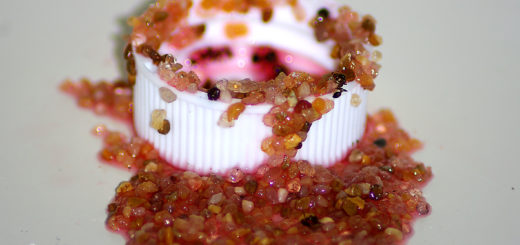Solenopsis invicta virus 1 decreases the foraging activity and influences the diet of its host
In the article “Viral infections in fire ants lead to reduced foraging activity and dietary changes” recenty published in Scientific Reports, Hung-Wei Hsu, Ming-Chung Chiu, DeWayne Shoemaker, and Chin-Cheng Scotty Yang reveal that Solenopsis invicta colonies infected with the Solenopsis invicta virus 1 (SINV-1) had a reduced foraging performance, a reduced lipid intake, and a shifted food preference towards carbohydrate-rich food. In this Photoblog contribution, Scotty Yang shares pictures and a video related to this article.
A Photoblog contribution created by Chin-Cheng Scotty Yang 
Viral infections in fire ants lead to reduced foraging activity and dietary changes. (© Chin-Cheng Scotty Yang)
A fire ant worker is set to foraging. Workers of infected colonies forage less efficiently than those of uninfected colonies. (© Chin-Cheng Scotty Yang)

A major worker is chopping down a meal worm with several minors. After having been virus-challenged, workers generally become much less interested in feeding on protein-rich foods such as arthropod prey. (© Chin-Cheng Scotty Yang)

Setup of the assays. (© Chin-Cheng Scotty Yang)

Several dozens of fire ant worker rushing out of the colony when being disturbed by a gardening shovel. (© Chin-Cheng Scotty Yang)

Two foraging workers are communicating with each other through antennation. (© Chin-Cheng Scotty Yang)

Two nurse workers are cooperating to move a sexual larva after being disturbed. (© Chin-Cheng Scotty Yang)

Scotty Yang holding a Dinomyrmex gigas queen. (© Chin-Cheng Scotty Yang)






Recent Comments